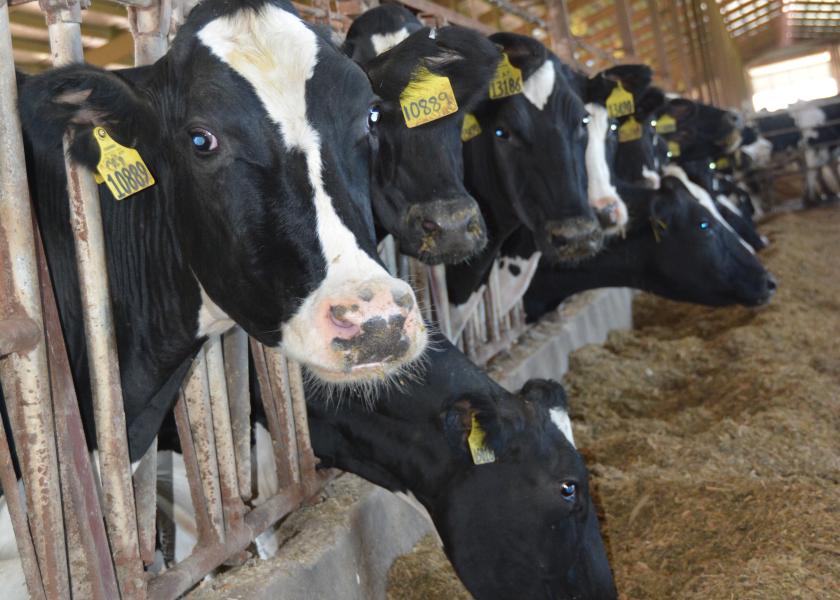Focus On Protein In Fresh Cow Diets

During the last 3 weeks of gestation, energy requirements increase due to fetal development and colostrum production. The mammary gland at 4 days postcalving increases demands for glucose by 3 times, amino acids by 2 times, and fatty acids by 3 times when compared to the uterus at 250 days of gestation.
At the same time, dry matter (DM) intake is reduced at the beginning of lactation. This mismatch between nutrient intake and demand generates a negative energy balance toward the end of the pregnancy that is prolonged for several weeks after calving.
Dry matter intake in fresh cows is insufficient to support lactation. A recent study published in the Journal of Dairy Science evaluated the effects of feeding increased dietary crude protein on productive performance and metabolism in fresh cows.
During 21 days postpartum, the researchers (Amanlou et al., 2017) fed three diets: 16.0% protein with 5.0% rumen undegradable protein (RUP), 18.7% protein with 7.0% RUP, and 21.4% protein with 9.0% RUP based on DM. Diets were similar in energy (1.7 Mcal of net energy for lactation/kg of DM) and protein levels were increased with corn gluten meal and fish meal.
In summary, by increasing dietary protein level up to 19% of DM, fresh cows:
- Increased DM intake (17.0 vs. 15.6 kg of DM/day in cows fed the 16 and 19% CP diets, respectively), 4% fat-corrected-milk yield (31.4 vs. 34.9 kg/day), milk protein (1.02 vs. 1.18 kg/day) and milk fat yield (1.22 vs. 1.32 kg/day).
- Reduced body condition change (-0.85 vs. -0.42 units), and blood NEFA (0.81 vs. 0.61 mM) and BHB levels (0.93 vs. 0.57 mM).
These findings indicate that increasing protein supply using RUP supplements in fresh cow diets has beneficial effects on performance and energy status of fresh cows. No additional benefits beside those mentioned previously were found feeding the 21% protein diet.
Similar results were found in other work conducted at Ohio State. The researchers (Carder and Weiss, 2017) compared a medium- (16.5% protein and 5.6% RUP) and a high-protein diet (18.5% protein and 6.9% RUP) during the first 3 weeks of lactation. In the high-protein diet, soyhulls and soybean meal were partially replaced with protected soybean meal and gluten meal to increase the supply of RUP.
Dry matter intake (17.9 kg/day) and body weight change (1.0 kg/day) were not affected by protein levels. However, production of energy-corrected milk and milk fat were 3.3 kg/day (38.6 vs. 35.5 kg/day) and 0.2 greater (1.46 vs. 1.26 kg), respectively, in cows consuming the high-protein diet. Daily milk protein production was not affected by diet, averaging 1.07 kg/day.
In conclusion, these studies show that it is beneficial to feed high-protein diets to fresh cows during the first 3 weeks of lactation.







